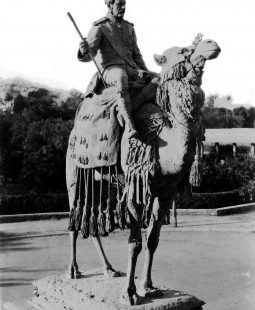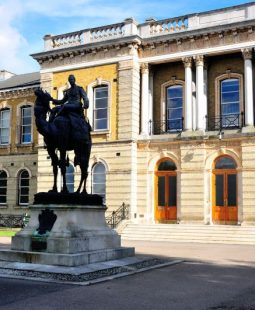Home | Gordon Charles George


- CountryUK
- Town:Chatham
-
Year of creation:1890
- Rider(s):Gordon Charles George
(1833 – 1885) was a British Army officer and administrator. He saw action in the Crimean War as an officer in the British Army. However, he made his military reputation in China, where he was placed in command of the “Ever Victorious Army”, a force of Chinese soldiers led by European officers. For his accomplishments, he was given the nickname “Chinese Gordon” and honours from both the Emperor of China and the British.
He entered the service of the Khedive of Egypt in 1873 (with British government approval) and later became the Governor-General of the Sudan, where he did much to suppress revolts and the local slave trade. Exhausted, he resigned and returned to Europe in 1880.
A serious revolt then broke out in the Sudan, led by a Muslim religious leader and self-proclaimed Mahdi, Muhammad Ahmad. In early 1884 Gordon was sent to Khartoum with instructions to secure the evacuation of loyal soldiers and civilians and to depart with them. In defiance of those instructions, after evacuating about 2,500 civilians he retained a smaller group of soldiers and non-military men. In the buildup to battle, the two leaders corresponded, each attempting to convert the other to his faith, but neither would accede.
Besieged by the Mahdi’s forces, Gordon organised a citywide defense that lasted for almost a year and gained him the admiration of the British public, but not of the government, which had wished him not to become entrenched. Only when public pressure to act had become irresistible did the government, with reluctance, send a relief force. It arrived two days after the city had fallen and Gordon had been killed.
- Sculptor(s):Ford, Edward Onslow
(1852 – 1901) was an English sculptor.
-
This sculpture was commissioned by the Corps of Royal Engineers, whose original specification was for a statue of General Gordon on foot in the uniform of an Egyptian General, but the sculptor considered it more appropriate for him to be mounted on a camel. To this end he made studies at London Zoo. The first casting was exhibited at the Royal Academy in 1890 and then erected in Brompton Barracks near Chatham, Kent.
A second casting was produced in 1902, shipped to Sudan and erected in Khartoum in 1903. Originally on a low plinth, Lord Kitchener ordered the statue to be placed on a much higher plinth to appear more impressive. The statue remained in Khartoum until 1958, but, rejected by the Sudanese Government after independence, it was presented after its return to the UK to Gordon’s School in Woking and it has been situated there since 1959 at the edge of Gordon’s School playing fields.
This sculpture does not qualify as a statue as the rider is not sitting on a horse but on a camel.






